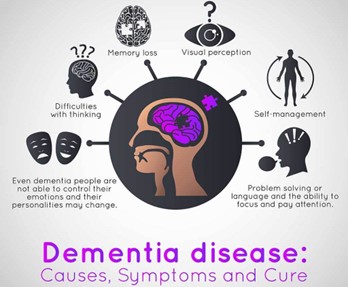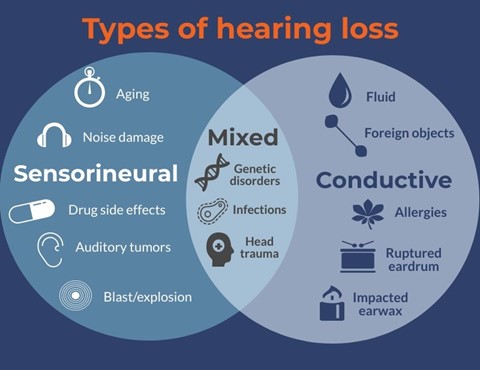The Practical Nurse (PN) is caring for a client with dementia and memory loss. Which of the following communication techniques would be most effective? (Select all that apply)
Avoid long explanations
Ask one question at a time
Use short sentences
Talk loudly
Correct Answer : A
Choice A reason: This is correct because it shows that the PN is respectful and sensitive to the client’s cognitive impairment. Long explanations can confuse and overwhelm the client, who may have difficulty processing and retaining information.
Choice B reason: This is correct because it shows that the PN is respectful and sensitive to the client’s cognitive impairment. Asking one question at a time can help the client focus and respond more easily, without feeling pressured or frustrated.
Choice C reason: This is correct because it shows that the PN is respectful and sensitive to the client’s cognitive impairment. Using short sentences can help the client understand and remember the message, without being distracted or confused by unnecessary words.
Choice D reason: This is incorrect because it shows that the PN is rude and disrespectful to the client’s hearing ability. Talking loudly can make the client feel annoyed or threatened, and may not improve communication if the client has hearing loss. The PN should talk in a normal tone and check for understanding.

Nursing Test Bank
Naxlex Comprehensive Predictor Exams
Related Questions
Correct Answer is A
Explanation
Choice A reason: Fear is a nursing diagnosis that indicates a problem with the client’s emotional response to a perceived threat or danger. It can be caused by factors such as uncertainty, lack of control, or loss of function. It can result in symptoms such as anxiety, restlessness, or palpitations. The client may experience fear related to their chronic renal failure and its complications, but it is not the highest priority nursing diagnosis, as it is not directly affecting their physical health or safety. Therefore, this choice is incorrect.
Choice B reason: Toileting self-care deficit is a nursing diagnosis that indicates a problem with the client’s ability to perform or complete activities related to urination or defecation. It can be caused by factors such as physical impairment, cognitive impairment, or environmental barriers. It can result in symptoms such as incontinence, constipation, or skin breakdown. The client may have a toileting self-care deficit related to their chronic renal failure and its effects on their urinary function, but it is not the highest priority nursing diagnosis, as it is not immediately life-threatening. Therefore, this choice is incorrect.
Choice C reason: Excess fluid volume is a nursing diagnosis that indicates a problem with the retention of water and sodium in the body. It can be caused by factors such as renal failure, heart failure, or liver cirrhosis. It can result in symptoms such as edema, hypertension, tachycardia, dyspnea, or crackles. The client’s vital signs and physical findings suggest that they have excess fluid volume, which is the highest priority nursing diagnosis, as it can lead to pulmonary edema, cardiac arrhythmias, or stroke if not treated promptly. Therefore, this choice is correct.
Choice D reason: Urinary retention is a nursing diagnosis that indicates a problem with the inability to empty the bladder completely or at all. It can be caused by factors such as obstruction, infection, or medication. It can result in symptoms such as difficulty or pain in urinating, frequent or urgent urination, or abdominal distension. The client may have urinary retention related to their chronic renal failure and its effects on their bladder function, but it is not the highest priority nursing diagnosis, as it is not directly causing their fluid overload or cardiovascular compromise. Therefore, this choice is incorrect.
Correct Answer is ["A","D"]
Explanation
Choice A reason: Speaks in a normal tone is an approach that can best facilitate communication with a client who is hearing-impaired. Speaking in a normal tone can help the client to hear the natural variations and inflections of the voice, and to avoid distortion or confusion. Speaking in a high-pitched or low-pitched tone can make the voice harder to hear or understand, especially if the client has a hearing loss in a specific frequency range. Therefore, this choice is correct.
Choice B reason: Speaks frequently is not an approach that can best facilitate communication with a client who is hearing-impaired. Speaking frequently can overwhelm or fatigue the client, and reduce their ability to process or retain the information. Speaking frequently can also interrupt the client’s thoughts or responses, and prevent them from expressing their needs or concerns. Speaking clearly and concisely, and allowing pauses or breaks, can enhance communication with a client who is hearing-impaired. Therefore, this choice is incorrect.
Choice C reason: Speaks directly into the unaffected ear is not an approach that can best facilitate communication with a client who is hearing-impaired. Speaking directly into the unaffected ear can create an uncomfortable or unnatural position for the client and the nurse, and interfere with eye contact or facial expressions. Speaking directly into the unaffected ear can also create a loud or distorted sound that may be unpleasant or painful for the client.
Speaking face-to-face, and slightly toward the unaffected ear, can improve communication with a client who is hearing-impaired. Therefore, this choice is incorrect.
Choice D reason: Speaks in a normal volume is an approach that can best facilitate communication with a client who is hearing-impaired. Speaking in a normal volume can help the client to hear the voice without difficulty or strain, and to avoid embarrassment or irritation. Speaking in a loud volume can make the voice harder to hear or understand, as it can cause background noise, echo, or feedback. Speaking in a loud volume can also imply shouting or anger, which can be disrespectful or offensive to the client. Therefore, this choice is correct.

Whether you are a student looking to ace your exams or a practicing nurse seeking to enhance your expertise , our nursing education contents will empower you with the confidence and competence to make a difference in the lives of patients and become a respected leader in the healthcare field.
Visit Naxlex, invest in your future and unlock endless possibilities with our unparalleled nursing education contents today
Report Wrong Answer on the Current Question
Do you disagree with the answer? If yes, what is your expected answer? Explain.
Kindly be descriptive with the issue you are facing.
